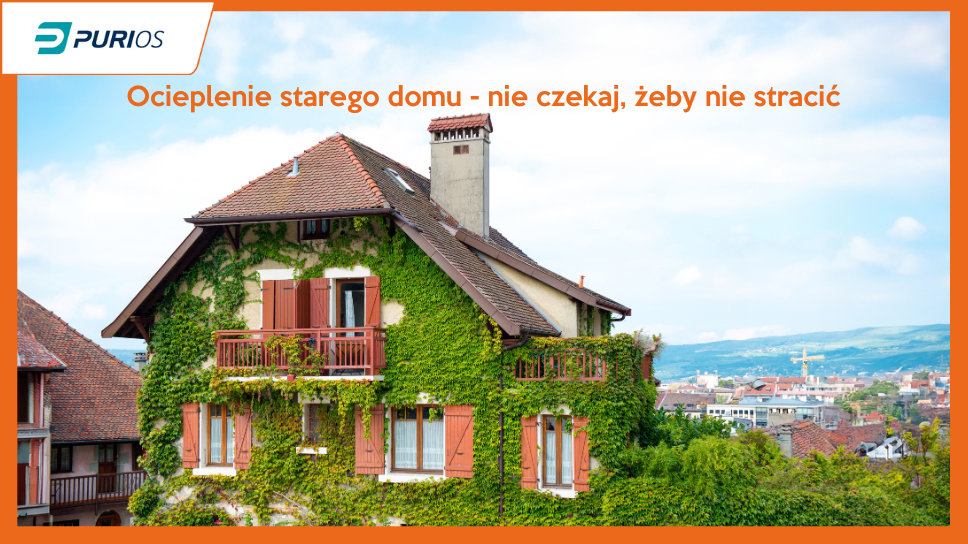Old-house thermal insulation — why is it worth deciding on thermal insulation?
The main problem of old houses is the high heat-transfer coefficient, which sometimes amounts to 1.5 W/m2K. Therefore, their thermal-insulation capacity is extremely low, resulting in the flow of cold air in the cold months and warm air during the hot months. Thermal insulation was not installed at all in old-type houses.
Polyurethane foam is ideal for insulating houses. Its main advantage is the low heat-transfer coefficient and high thermal-insulation properties. Polyurethane foam does not allow thermal bridges to form, thus sealing the places where heat usually escapes.
Why it is worth deciding to insulate an old house with PUR foam?
Insulating a house with polyurethane foam will work in both winter and summer. In the cold months, it will prevent warm air from escaping from inside the house. In summer, it will prevent the house from overheating. This will directly reduce heating and air-conditioning costs. Insulation with polyurethane foam will allow significant savings in heating costs.
Another advantage of insulating an old house with polyurethane foam is its simplicity of application, which consists of spraying thermal-insulation material onto a given surface. The PUR foam immediately increases in volume, filling every gap, and then cures. The process of thermal insulation with foam takes much-less time than when insulating using other materials.
Polyurethane-foam insulation is suitable for every part of the house, including the loft, which tends to take up a large area. Experienced operatives do not have the slightest problem with applying the material under slanted ceilings, and in cramped spaces exposed to thermal bridges.
The polyurethane-foam thermal insulation of an old house is also distinguished by water-vapour permeability. The material breathes but does not absorb water. It does not lose its properties over the years, and is resistant to mould and fungus. The foam layer will not deform or mechanically damage. It protects old houses from heat-escape for a long time in an unchanged state.
What can we achieve by insulating an old house from the outside?
The most-popular method of insulation is the polyurethane-foam thermal insulation of external walls. Insulating on the inside prevents heat from penetrating into the walls, leaving the bricks damp. This can result in freezing and damage to the walls, which is particularly problematic for old houses. The thermal insulation of external walls helps to minimise this problem.
External-wall thermal insulation using polyurethane foam can be combined with façade renovation. Closed-cell PUR foam, e.g., Purios H, can be applied on both masonry and wooden walls. The product fills the gaps, preventing air and moisture from passing through. Polyurethane-foam insulation is best done on a dry surface in the summer months. Remember to hire trained professionals, who have the right skills and tools to do the work properly.

 This website uses cookies. By using this website, you consent to the use of cookies in accordance with your browser settings.
This website uses cookies. By using this website, you consent to the use of cookies in accordance with your browser settings.